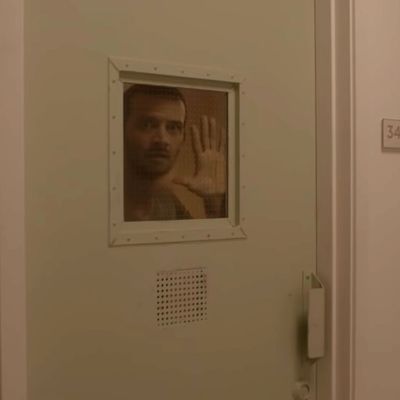
Was The OA all a dream? We haven’t seen or heard from Brit Marling’s moody, unapologetically strange Netflix show since its 2016 surprise premiere. And now that it’s back, much of what transpires in the first episode of part two seems to undercut whatever we thought we knew about the show’s universe. So, yes, maybe it was a dream, at least to our hero.
Remember, this was the series that blended alternate dimensions, torture chambers, medical miracles, and interpretive dance into a metaphysical, flashback-driven narrative, then torched the whole mythology with a final-episode school shooting. More than simply being garish and deeply unpleasant, the first season finale seemed to confirm the suspicions of the show’s harshest critics: that at the end of the day, these guys had no idea what they were doing.
So maybe the extended break between seasons was a good thing in this case. It allowed Marling and co-creator/director Zal Batmanglij to regroup, take a few deep breaths, and figure out what kind of tale they really wanted to tell. And right at the outset of The OA: Part II, they’ve made an important realization: Strange stories go down a lot smoother as detective stories.
Hence, our new co-lead is Karim (Kingsley Ben-Adir), a private eye who lives on a houseboat, like Travis McGee or Crockett from Miami Vice. Sullen and skeptical in the manner of the classic gumshoes, Karim has carved out a niche looking after the forgotten people of the rapidly gentrifying Bay Area — we see him comfortably navigating immigrant communities and other marginalized groups. “They pay you to give a shit,” one cop snarls at him. Ben-Adir is great here, with his seen-it-all shrug and effortless cool, and his presence gives us a viewer surrogate who’s just as confused and exasperated by all this pseudoscientific mumbo-jumbo as we are.
A visit from a frantic Vietnamese woman sets Karim off on a new case to track down her missing teenaged daughter Michelle, who seems to have vanished after scoring a huge virtual payout in a mysterious mobile phone game that’s sucking in all the local youths. By episode’s end, Karim has infiltrated the tech company responsible for the game — but his investigation has only opened a wormhole into a much larger conspiracy, one whose shades of medical experimentation surely relate in some way to Hap’s “near-death experience” torture chamber from season one.
And thus are we belatedly brought back around to the events of before, only to realize that the older story may not be quite as interesting as we remembered. Prairie/OA (Marling) makes her return midway through the episode, having successfully “jumped” between dimensions, which means this installment actually takes place in an alternate-reality Bay Area where none of the events of the first season ever happened. She is now Nina Azarova — her Russian birth name, and, if you’re keeping track, the third identity this character has taken on.
Instead of having been blinded, orphaned, adopted, and raised in a McMansion in Michigan, Nina has retained her oligarch status and is now a member of the Silicon Valley tech elite, with a lavish penthouse suite and an angelic investor fiancé (who seems to be running the show at the mobile game cult that Karim’s investigating). Also, Joe Biden is president for some reason. Other than that, the new dimension seems basically the same as the old one. Mobile tech has even developed at the same rate.
Prairie/Nina scarcely gets to absorb all this new information before she’s whisked away to a Treasure Island psych ward for her “irrational” behavior, and here, it seems, is where we will be spending much of our time. Speaking of Hap … he’s back, folks. Jason Isaacs’s unsettling, diabolical villain (a necessary jolt to the first season’s senses) is, for now, the only person besides Prairie who seems to know what the two of them are doing here. From the looks of things, Hap has simply used the mental hospital to reconstitute his basement torture chamber from their old dimension: OA’s old cellmates are briefly glimpsed in the other rooms, and her star-crossed soulmate Homer (Emory Cohen) is now a medical resident training under Hap.
So we see how these two dimensions can converge, at least narratively. And we now have confirmation that the narrative Prairie spun about her own captivity last season was “true,” in whatever sense that word applies here. Yet I maintain that The OA becomes less interesting the further it tries to commit itself to hard sci-fi rules. This show is better as a mood piece of spiritual unrest, an extended riff on what it feels like to be completely disassociated from your own reality. It compels us not because of all the plot-teasing, but because Prairie is a modern avatar for our collective sense of un-belonging. She lives in a world where nothing seems to be going right, and she’s constantly searching for impossible ways to go back home. We don’t need to know exactly how she gets there. We just want to be there when she tries.
Stray Thoughts
• It’s becoming an OA trademark to delay the season opening credits for an absurd amount of time (in this case, 30 minutes into the episode). I’d like to believe this is a screw-you to the Netflix “Skip Credits” button.
• Marling spent most of the last season playing her character as a glass-eyed, all-seeing prophet. She does that mode well, but it’s an interesting change of pace to see her in genuine discomfort and fear this time around.
• Also helping Marling and Batmanglij? Their decision to root the action in a more explicit setting. This is the most evocative use of the Bay Area I’ve seen onscreen in a while: the episode captures the region’s absurd wealth gap, the old-money real estate, the oddities of Oakland, the mystery of Treasure Island. It’s unbelievable enough even without the alternate dimension.




